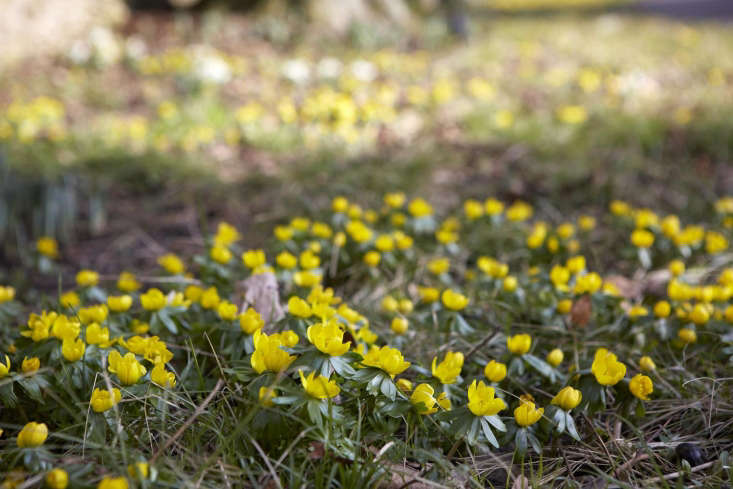Aconite, Eranthis hyemalis: “Bowls for Bees”
Winter aconites share their moment with snowdrops and can be treated in a similar way, grown en masse, under trees. Now is the time to dig and multiply, instead of waiting for their tubers to harden and dry out (the same can be said for sowing their seeds).
Photography by Britt Willoughby Dyer.

With their buttercup petals over an Elizabethan ruff, hardy aconites are programmed to flower when trees are stripped of their leaves. They stand to attention as soon as the sun comes out.

By the time trees’ leaves begin to unfurl, the aconite’s work is done. An important aspect of this is in providing early food for needy bees and other pollinating insects.

Cheat Sheet
• Aconites flower at about the same time as snowdrops, in similar conditions. The simple combination of bright yellow and bright white is a good one, in deepest winter. They are hardy in USDA zones 4-7.
• Anything that flowers early is good for bees. Aconites are especially easy to access (like crocus) since they face upwards, opening up in sunshine.
• In large drifts, under large trees, is where they look happiest.

Keep It Alive
• Like snowdrops, aconites are best planted “in the green” i.e. when the leaves are just beginning to die back.
• Do not let them dry out. Spread aconites around after flowering, or plant very fresh bulbs, patiently wait for them to spread themselves by seed, or sow seed yourself. Again, it has to be fresh.
• Aconites will survive the shade of large-leafed trees and are useful in places where grass refuses to cooperate. Not attractive to deer.

Aconites are vigorous (and quite a strident yellow color) so they don’t work everywhere. Use them as problem solvers in areas which are less favorable to more delicate early spring plants.
N.B.: See our Bulbs & Tubers Design Guide for tips on more of our favorite early springtime flowers, including:
- Field Guide: Crocus.
- Field Guide: English Bluebell.
- Field Guide: Grape Hyacinth.
- Field Guide: Siberian Squill.







Have a Question or Comment About This Post?
Join the conversation